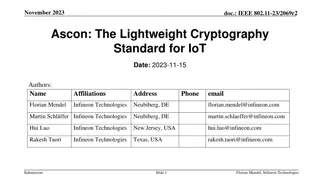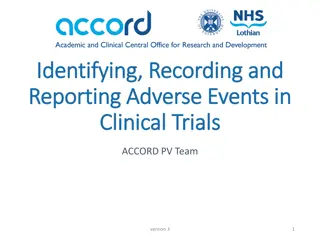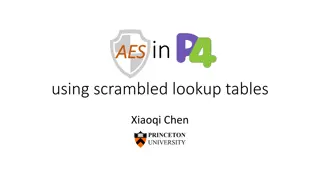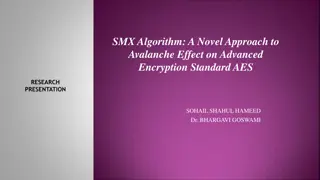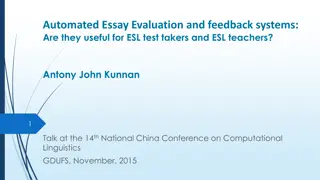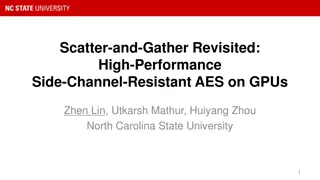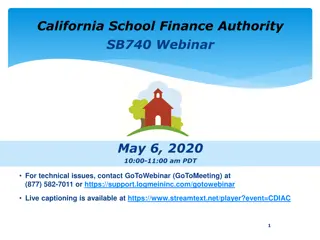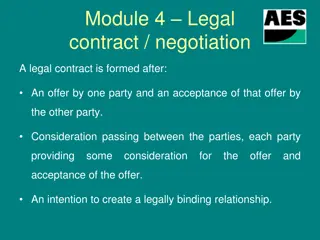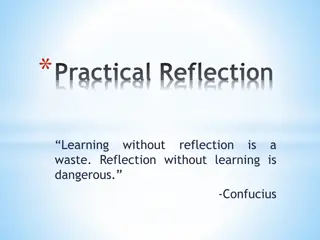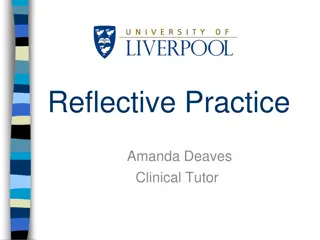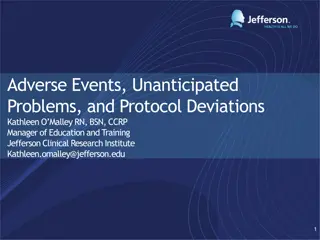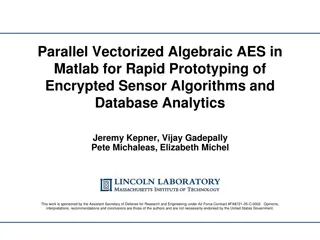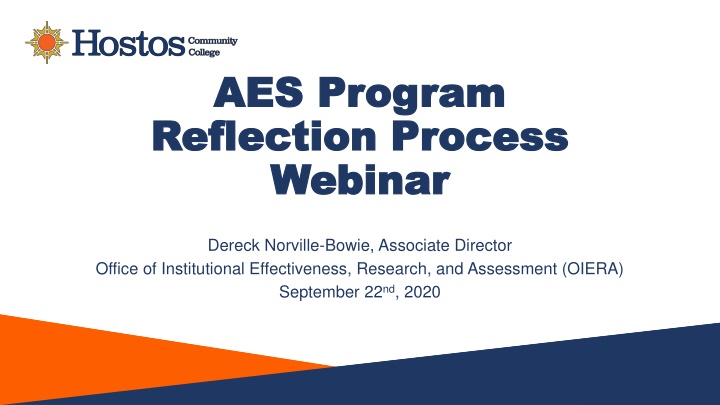
Redesigned AES Assessment Process Overview
Explore the history of Assessment in AES, goals of the newly redesigned process, key highlights, and support roles in this informative webinar led by Dereck Norville-Bowie. Learn about the APR vs. Non-APR, phases of the assessment process, reasons for redesigning, and goals of the redesign.
Download Presentation

Please find below an Image/Link to download the presentation.
The content on the website is provided AS IS for your information and personal use only. It may not be sold, licensed, or shared on other websites without obtaining consent from the author. If you encounter any issues during the download, it is possible that the publisher has removed the file from their server.
You are allowed to download the files provided on this website for personal or commercial use, subject to the condition that they are used lawfully. All files are the property of their respective owners.
The content on the website is provided AS IS for your information and personal use only. It may not be sold, licensed, or shared on other websites without obtaining consent from the author.
E N D
Presentation Transcript
AES Program AES Program Reflection Process Reflection Process Webinar Webinar Dereck Norville-Bowie, Associate Director Office of Institutional Effectiveness, Research, and Assessment (OIERA) September 22nd, 2020
Agenda Agenda Time Agenda Item Welcome and Settling In Brief History of AES Assessment at Hostos Goals of the Newly Redesigned Process Highlights of the Revision Process Overview of AES PR Process & Process Timeline Supports for the Process Key Roles Questions and Answers 12:00 12:05 12:05 12:10 12:10-12:25 12:25 12:30 12:30 12:45 2
Recording Recording 3
History of Assessment in AES History of Assessment in AES Units Units Non-Academic Program Review Process 2013 Revision to Non-Academic Program Review Process - 2017 4
POLL POLL 5
APR vs. Non-APR Non-Academic Program Review (Non-APR) A study of individual offices, programs, or initiatives that are not specifically academic in nature to assess: operational effectiveness and efficiency; direct or indirect impact on student success; and adequacy of staff and resources. Academic Program Review (APR) A study of program effectiveness that goes beyond the assessment of student learning to examine: administrative effectiveness, relevance of course offerings to industry standards, instructional and student support services, and adequacy of faculty and staff. 6
Non Non- -APR in a Nutshell APR in a Nutshell Phases of Non-APR Process Implementation Self-Study Phase External Review Phase Phase 7
The Cycle The Cycle Self-study Year One Two Year Hiatus VP External Evaluator Implement- ation Year Two Year Three Program and VP 8
Reasons for Redesigning Reasons for Redesigning 9
Goals of the Redesign Pivot away from a report- and administratively-focused process toward a more reflective, improvement-focused process Leverage the annual reporting process (Not be a superfluous add-on) Make the outputs of the process more meaningful to AES units 10
Highlights of Redesign Focus is shifted from Product to Process (Reflection) Process has been intentionally renamed Designed to leverage the learning from the annual reporting process and feedback into it Provides structured guidance for individual and group reflection/assessment via structured discussions Designed to be reasonably undertaken in one semester (Fall) 11
AES PR Process Overview AES Program Reflection Process is broken down into 4 parts: Component Description Timeframe Review of previous years annual reports and team discussions August - September Part 1 Co-development of draft template document (based on assessment and reflection) Part 2 September External feedback conversations to revise and refine the template October - November Part 3 Using the template to complete annual report template and implementing your new plan November - December Part 4 12
Part 1 Part 1 Review of Previous Years Annual Reports Steps Who Resources/ Templates Timeframe Reviews of previous years annual reports and other relevant data Discussion(s) to unpack learnings and brainstorming about future direction Entire unit team Entire unit team, led by unit leader(s) Guiding Questions and Prompts for Team Members Individual Assessment Facilitation guide (for team member leading brainstorming and discussion) August - September 13
Part 2 Part 2 Co-Development of Template Document Resources/ Templates Steps Who Timeframe Completion of first draft of AES PR template Unit Team designee (Likely unit leader[s]) AES Program Reflection Template September 14
Part 3 Part 3 Feedback and Revision Steps Who Resources/ Templates Guidance document for seeking external guidance Facilitation guide (for divisional leadership leading feedback conversation) Timeframe Gather feedback from entity outside of the unit and then through a conversation with division leadership Revisions to draft template (if needed) and then finalizing document, before uploading to shared platform (TBD) Participation in a cross-unit activity to celebrate learning and identify potential areas of collaboration. Unit leader(s), external entity, & Division leader Unit leader(s) Unit Team October - November 15
Part 4 Part 4 Implementation and Management Resources/ Templates Steps Who Timeframe Use template document to draft annual report template for upcoming academic year Assignment of roles and responsibilities for upcoming annual report template Implementation of new plan Unit team, led by unit leader(s) Unit leader(s) Unit team MOCHA Framework Document November - December 16
Primary Roles & Responsibilities Who Responsibilities Develop and communicate resources to support the AES PR process Provide training and support to unit, department, or program leadership undergoing AES PR Provide data guidance and support, as needed Lead unit team through reflection, assessment, and brainstorming process Seek feedback and thought partnership on proposed direction Complete template document Ensure template document informs following year s annual report template Support unit leadership through AES PR process Encourage prioritization of the AES PR process Provide feedback and thought partnership on unit direction (based on unit reflection, operational priorities, and college-wide priorities) OIERA Unit Leadership Division Leadership 17
Supports for the Process - Resources There are a few key documents that have (or will be) drafted to capture or support this process To Capture: Template Document ToSupport: Guiding questions and prompts for individual reflection Facilitation guide for leading team discussions Guidance document for seeking external feedback Facilitation guide for divisional leadership to lead discussion (In development) 18
Guidance Document for External Feedback 21
Supports for the Process Support Structures Entity Role Develop and communicate resources to support the AES PR process Provide training and support to unit, department, or program leadership undergoing AES PR Provide data guidance and support, as needed OIERA Provide AES PR consultation to units as needed Collaborate with OIRA in offering AES PR workshops and resources Collectively problem solve any barriers to the process and develop solutions to improve the process for AES units AES Assessment Committee Collectively brainstorm potential approach to the AES PR process Share drafts, examples, and ideas with each other to help each other strengthen their AES PR Process Act as an additional resource to call upon and share challenges and successes with each other, thereby creating community AES Unit Cohort/ Cohort Support Plan 22
EXIT POLL EXIT POLL 24
Thank You! Thank You! 25

